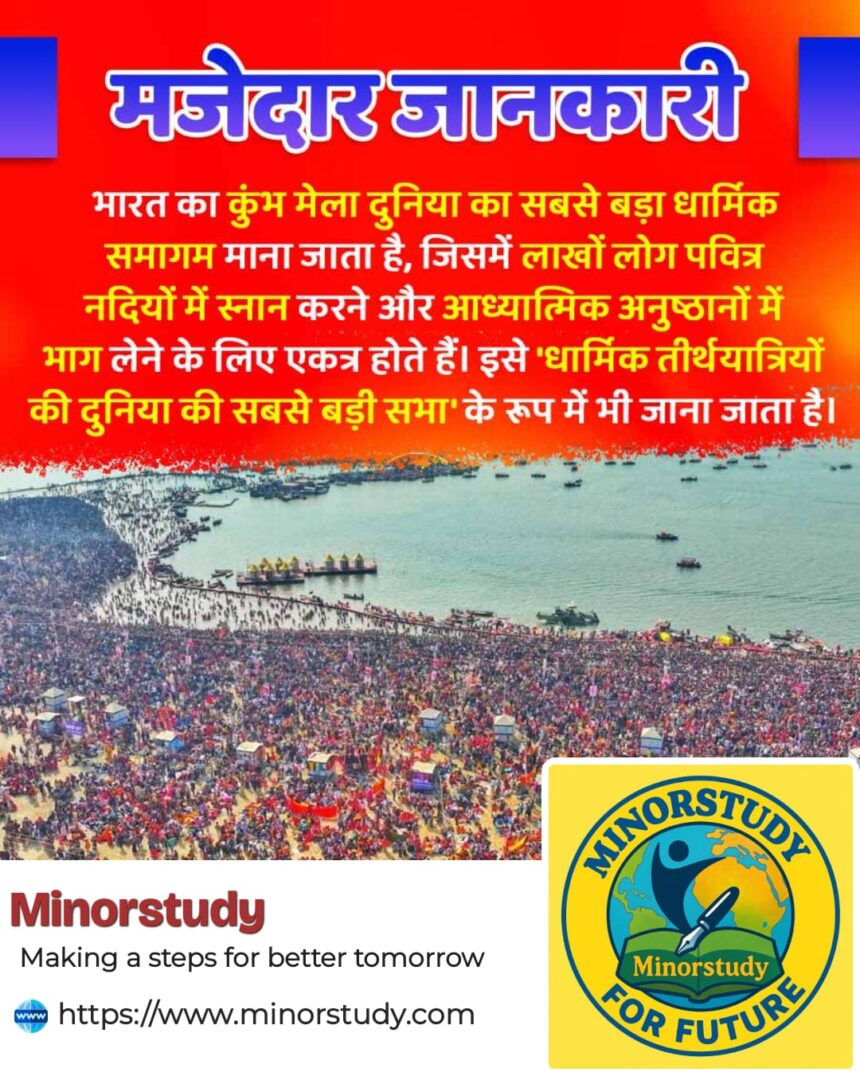Introduction
India is a land of spirituality, faith, and timeless traditions. Among its countless festivals and sacred observances, Kumbh Mela shines as the largest religious gathering on Earth. It is often called “the world’s largest gathering of religious pilgrims”, where millions of devotees come together to bathe in sacred rivers, seek blessings, and participate in spiritual rituals.
But Kumbh Mela is more than just a gathering—it is a living symbol of devotion, culture, unity, and faith. With its history going back thousands of years, the Kumbh has become a bridge between the divine and the human, between the ancient and the modern, and between individual spirituality and collective consciousness.
In this article, let us explore the history, facts, FAQs, timeline, significance, observance, and impact of this grand spiritual fair.
🕉️ History of Kumbh Mela
The history of the Kumbh Mela is deeply rooted in Hindu mythology.
The word “Kumbh” means pitcher or pot.
According to the Samudra Manthan (Churning of the Ocean) legend, gods (Devas) and demons (Asuras) churned the ocean for the nectar of immortality (Amrit).
When the nectar appeared, a celestial fight broke out, and drops of Amrit fell at four locations on Earth: Prayagraj (Allahabad), Haridwar, Nashik, and Ujjain.
These sites became the sacred grounds of Kumbh Mela.
The written records of Kumbh Mela go back to the 8th century when Adi Shankaracharya, the great Hindu philosopher, organized gatherings of saints and ascetics at Prayagraj to revive Sanatan Dharma.
Today, Kumbh Mela is a UNESCO Intangible Cultural Heritage, symbolizing India’s unique cultural and spiritual legacy.
📌 Important Facts About Kumbh Mela
Largest Religious Gathering: More than 200 million pilgrims attend the Kumbh in a single season.
Occurs Every 12 Years: Each location (Prayagraj, Haridwar, Nashik, Ujjain) hosts the Kumbh in rotation.
Types of Kumbh: There are four types – Maha Kumbh (every 144 years), Purna Kumbh (every 12 years), Ardh Kumbh (every 6 years), and Kumbh at different sites.
Sacred Bathing (Snan): The main ritual involves bathing in holy rivers like the Ganga, Yamuna, Godavari, and Shipra.
Akharas & Sadhus: Various ascetic groups (Akharas) participate, including Naga Sadhus who attract worldwide attention.
Global Recognition: Kumbh Mela was recognized by UNESCO in 2017 as the world’s largest peaceful gathering.
Spiritual Tourism Hub: Millions of foreigners visit the Kumbh to witness Indian culture.
Medical & Security Planning: The Kumbh is also known for being a temporary mega-city, with hospitals, security systems, and facilities for millions.
Symbol of Faith: Above all, Kumbh Mela stands for faith, devotion, and collective spiritual harmony.
📅 Timeline of Kumbh Mela
Mythological Era: Origin in Samudra Manthan legend.
8th Century: Adi Shankaracharya formalizes Kumbh gatherings.
12th Century: Widespread recognition in Hindu texts.
19th Century: Colonial records mention massive pilgrim gatherings.
20th Century: Kumbh becomes globally famous.
2013 Prayagraj Maha Kumbh: More than 120 million pilgrims attended—making it the largest gathering in human history.
2019 Prayagraj Kumbh: UNESCO recognition, huge global media coverage.
2021 Haridwar Kumbh: Held during the pandemic with safety measures.
2025 Prayagraj Maha Kumbh (Upcoming): Expected to be the largest ever recorded gathering.
🙏 Significance of Kumbh Mela
The Kumbh Mela is not just a festival—it carries spiritual, cultural, social, and human significance:
Spiritual Purification: Bathing in sacred rivers is believed to cleanse sins and help attain Moksha (liberation).
Unity in Diversity: Millions of people from different regions, castes, and cultures come together in harmony.
Learning & Knowledge Sharing: Saints, scholars, and ascetics hold discourses on philosophy, dharma, and spirituality.
Revival of Traditions: Preserves ancient Vedic rituals and practices.
Global Spiritual Identity: Showcases India as a spiritual leader in the world.
🎉 Observance and Rituals
The rituals of Kumbh Mela include:
Shahi Snan (Royal Bath): The most important ritual, when saints and devotees take a holy dip.
Akharas Processions: Colorful and spiritual parades of Naga Sadhus and saints.
Pravachans & Kirtans: Religious discourses, chanting of mantras, and devotional music.
Charitable Activities: Feeding the poor, free medical camps, and community service.
Pilgrimage Experience: Visiting nearby temples, ashrams, and holy ghats.
💡 Important Points to Remember
Kumbh Mela happens at 4 places: Prayagraj, Haridwar, Nashik, Ujjain.
Millions of people attend, yet it remains a peaceful spiritual fair.
Shahi Snan dates are considered the most auspicious.
It reflects India’s living spiritual heritage.
Next Maha Kumbh will be in 2025, Prayagraj.
💐 Wishing on Kumbh Mela
On this sacred occasion, devotees greet each other with wishes such as:
🌸 “May the holy waters wash away your sorrows and fill your life with peace and divinity.”
🌸 “Wishing you the blessings of the sacred rivers and the eternal light of wisdom on this Kumbh Mela.”
🌸 “May Kumbh bring harmony, health, and happiness to all.”
🙌 Importance in Our Life & Society
Encourages faith and devotion in everyday life.
Promotes unity, equality, and togetherness.
Strengthens family and cultural bonds through collective pilgrimage.
Boosts local economy and tourism, supporting millions of livelihoods.
Inspires global respect for Indian traditions.
Provides a platform for learning, reflection, and transformation.
📌 FAQs on Kumbh Mela
Q1. Why is Kumbh Mela held every 12 years?
It is based on the celestial alignment of Jupiter, Sun, and Moon.
Q2. Which is the largest Kumbh Mela ever?
The 2013 Prayagraj Maha Kumbh, with over 120 million attendees.
Q3. Why do people take a bath in the river during Kumbh?
It is believed to purify the soul and help achieve liberation.
Q4. What are Akharas?
Religious groups or sects of ascetics who participate in rituals.
Q5. Is Kumbh Mela only for Hindus?
Primarily a Hindu festival, but people of all faiths and nationalities attend.
✅ Conclusion: Daily Life Impacts of Kumbh Mela
The Kumbh Mela is more than a festival—it is a symbol of humanity’s eternal search for divinity, peace, and unity. It inspires us to:
Live a life of faith and moral values.
Practice tolerance and togetherness.
Respect nature and sacred rivers.
Connect with cultural roots and traditions.
Remember that spirituality is a universal path that unites us all.
Kumbh Mela teaches us that even in today’s modern world, ancient wisdom has the power to guide our daily lives with light, balance, and harmony.
✨ Final Thought: The next time you hear about Kumbh Mela, remember—it’s not just the world’s largest gathering of pilgrims, it’s a celebration of faith, humanity, and eternity.








